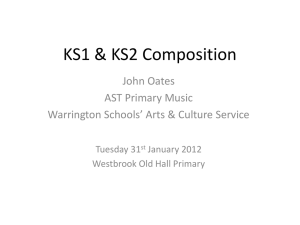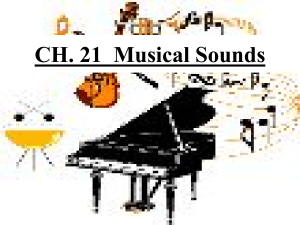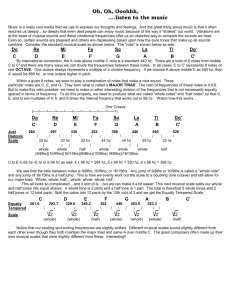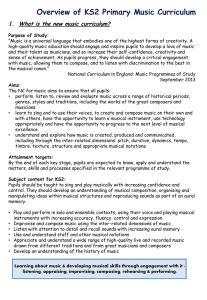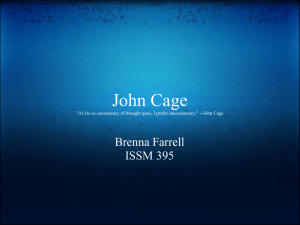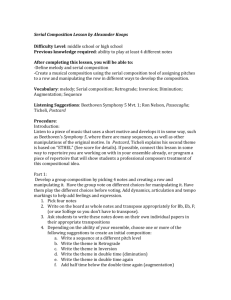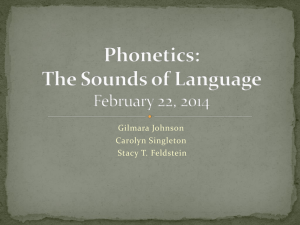What, in the World, is Music?
advertisement
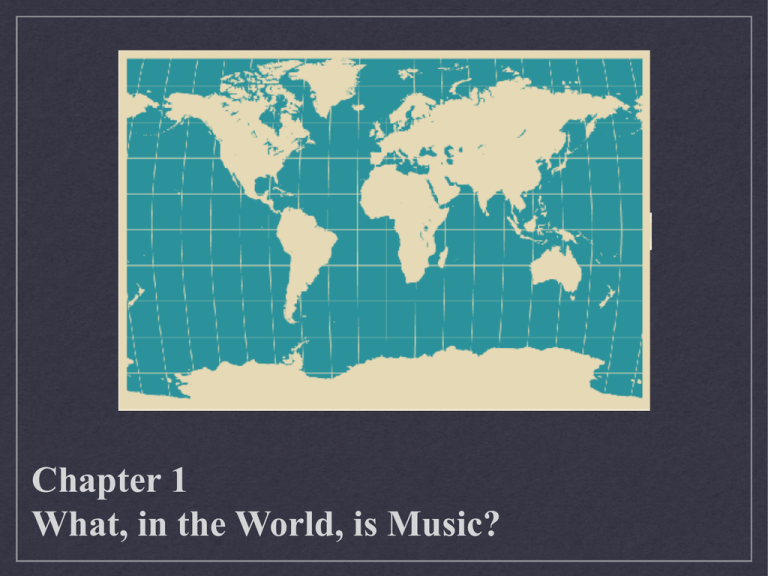
Chapter 1 What, in the World, is Music? 4’33” - John Cage Qur’anic Recitation “Wrecking Everything” - Overkill Os Mutantes A Point of Departure: Five Propositions for Exploring World Music Proposition 1 The Basic Property of All Music is Sound A tone is a musical sound, as opposed to noise sounds, speech sounds, ambient sounds, etc. It is a sound whose principal identity is a musical identity, as defined by people (though not necessarily all people) who make or experience that sound. Every tone has four basic properties: duration (length); frequency (pitch); amplitude (loudness); and timbre (sound quality.) Tones are also defined by their surrounding musical environments. This is how relationships between tones are formed, like melodies, chords, rhythms, and textures. Tones also acquire meanings in relation to their cultural significance. For example, the exact same piece of music will have a different cultural meaning if used in a religious ritual that in a fast food commercial. Any and all sounds have the potential to be tones, or musical sounds. In John Cage’s 4’33”, a piece featuring a seeming absence of sound is presented as music. In all actuality, however, it is the random assortment of coughs, chair squeaks, air conditioning hums, etc., that are considered musical. One of the main “points” is to encourage the audience to reorient their hearing. Proposition 2 The Sounds (and Silences) That Comprise a Musical Work are Organized in Some Way Music sounds always emerge within some organizational framework, and are therefore organized. For example, Beethoven’s Symphony #9 (CD ex. #1-2) is easy for Westerners to identify as an organized form of sound. Japanese gagaku (CD ex. #1-3) is also music, although its organizational principles are unfamiliar to Westerners. Also included is music that subverts conventional organizational principles, like much of John Cage’s music. Proposition 3 Sounds are Organized into Music by People; Thus, Music is a Form of Humanly Organized Sound Music is a human phenomenon: it is a form of “humanly organized sound” (Blacking 1973) For the purposes of this class, music is something that people make, hear, or assign to other kinds of sounds. (For example, saying that birds and whales ‘sing.’) Any and all sounds have the potential to be employed and heard as musical sounds, but require the perception as such by a human being. Proposition 4 Music Is a Product of Human Intention and Perception Intention and perception are the two basic processes of human cognition involved in determining what is and what is not music. When any sound is presented with the intention of being music, or when a person perceives a sound as music, we will consider it as such. This will be known as the HIP (human intention and perception) approach. The HIP approach is valuable because: It privileges inclusiveness over exclusiveness. It emphasizes the idea that music is inseparable from the people who make and experience it. John Cage’s 4’33” was intended to be music. Islamic Qur’anic recitation (CD ex. #1-4) is perceived by many Westerners as music, but not by most Muslims. Music by a thrash metal band like Overkill is considered music since its audience members and band members consider it as such, even if other people might not agree. Proposition 5 The Term Music Is Inescapably Tied to Western Culture and Its Assumptions Many cultures do not have a word equivalent to music in their language, and some languages that do have a word for music, like Arabic, apply it differently than speakers of English, for example, do. Although every culture in the world has organized sound that the West considers music, they do not all categorize this as music. We are thus doomed to ethnocentrism: we cannot help but impose our own cultural perspectives on other practices and lifeways. There are several options for confronting this dilemma: Avoid dealing with these problematic phenomena of sound in musical terms altogether. Impose Western musical concepts on other practices. Find some way to integrate and balance our own perceptions of “music” with indigenous terms and concepts. The third is the option selected for this text, and will be used in addressing how music lives and how music works.
